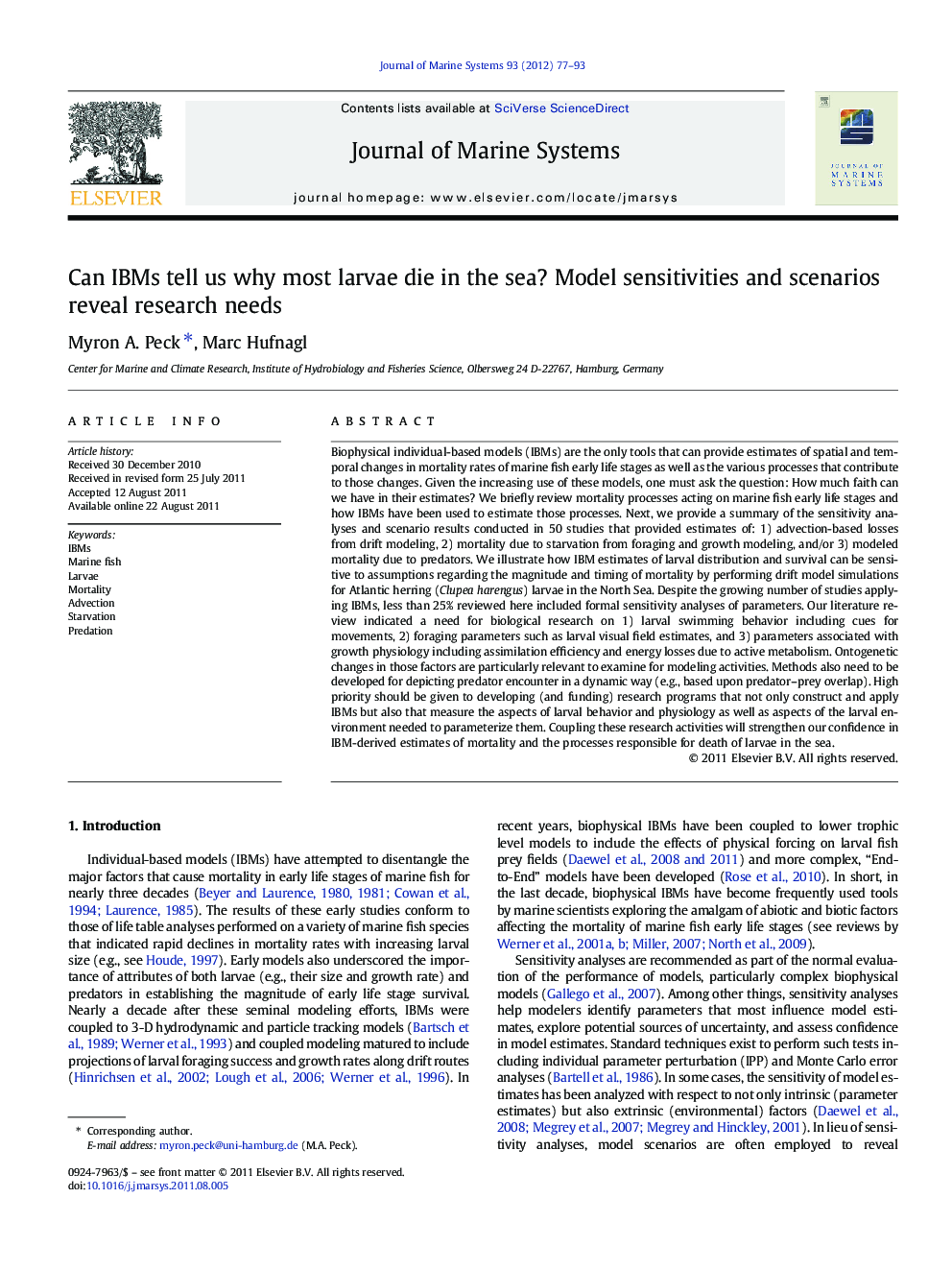| کد مقاله | کد نشریه | سال انتشار | مقاله انگلیسی | نسخه تمام متن |
|---|---|---|---|---|
| 4548298 | 1627321 | 2012 | 17 صفحه PDF | دانلود رایگان |

Biophysical individual-based models (IBMs) are the only tools that can provide estimates of spatial and temporal changes in mortality rates of marine fish early life stages as well as the various processes that contribute to those changes. Given the increasing use of these models, one must ask the question: How much faith can we have in their estimates? We briefly review mortality processes acting on marine fish early life stages and how IBMs have been used to estimate those processes. Next, we provide a summary of the sensitivity analyses and scenario results conducted in 50 studies that provided estimates of: 1) advection-based losses from drift modeling, 2) mortality due to starvation from foraging and growth modeling, and/or 3) modeled mortality due to predators. We illustrate how IBM estimates of larval distribution and survival can be sensitive to assumptions regarding the magnitude and timing of mortality by performing drift model simulations for Atlantic herring (Clupea harengus) larvae in the North Sea. Despite the growing number of studies applying IBMs, less than 25% reviewed here included formal sensitivity analyses of parameters. Our literature review indicated a need for biological research on 1) larval swimming behavior including cues for movements, 2) foraging parameters such as larval visual field estimates, and 3) parameters associated with growth physiology including assimilation efficiency and energy losses due to active metabolism. Ontogenetic changes in those factors are particularly relevant to examine for modeling activities. Methods also need to be developed for depicting predator encounter in a dynamic way (e.g., based upon predator–prey overlap). High priority should be given to developing (and funding) research programs that not only construct and apply IBMs but also that measure the aspects of larval behavior and physiology as well as aspects of the larval environment needed to parameterize them. Coupling these research activities will strengthen our confidence in IBM-derived estimates of mortality and the processes responsible for death of larvae in the sea.
► We reviewed individual-based models (IBMs) exploring marine fish larval mortality.
► IBMs simulate losses via processes such as starvation, predation, and advection.
► Model sensitivity analyses and scenarios revealed key biological parameters.
► We illustrate this by using mortality assumptions and simulations of larval drift.
► New research on larval growth physiology and behavior is essential for advancing IBMs.
Journal: Journal of Marine Systems - Volume 93, May 2012, Pages 77–93